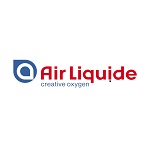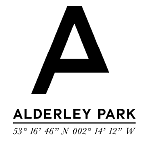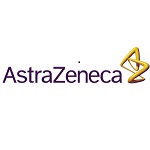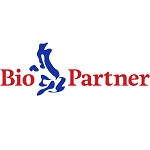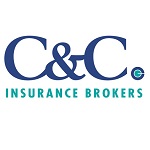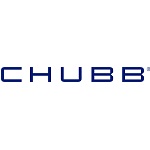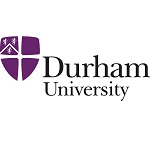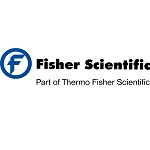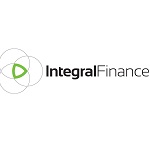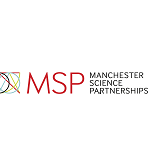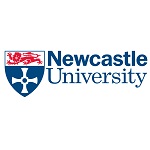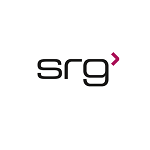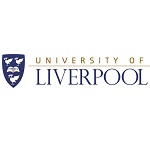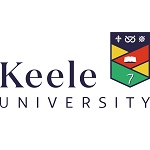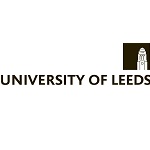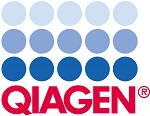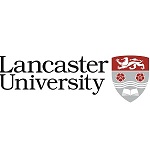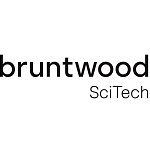Patent filings in treatments for neurodegenerative disorders: a shift toward biotherapeutic innovation
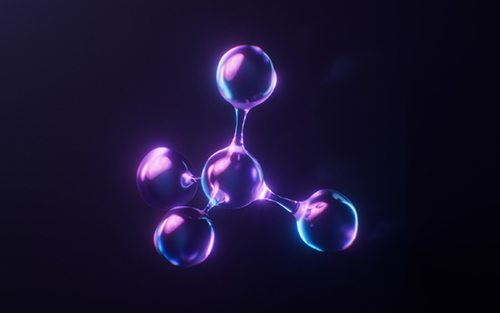
Summary
Our analysis of patent filings directed to treatments of neurodegenerative disorders (NDs) reveals a sharp increase in patent filings over the past decade. Our analysis also reveals that filings appear to have been driven by innovative small and medium-sized enterprises (SMEs) aiming to develop targeted treatments using biotherapeutics that address the complex underlying pathology of these conditions. This appears to be a move away from historical trends where patent filings towards ND therapies were largely directed towards small molecule therapies with Big Pharma being a major player. Small molecule therapies have been often criticised for alleviating symptoms rather than addressing the underlying pathology. This shift towards targeted treatments and biotherapeutics holds promise for improving outcomes and quality of life for patients.
Introduction
NDs are a significant public health challenge, mainly due to changes in global demographics as life expectancy increases. NDs are marked by a progressive loss of neurons and synaptic connections and typically occur in later life. Specific diseases are distinguished by the type and location of neuronal loss, with severity of neuronal loss correlating with clinical progression. Patients have a limited survival rate; Alzheimer’s disease for example is the 6th leading cause of death worldwide1.
The current therapies have failed to control the progression of NDs, partly due to challenges associated with therapy such as crossing the blood brain barrier (BBB) and the side effects of available treatments. They are often criticised as only treating the clinical symptoms rather than controlling the underlying progression of NDs1.
Analysis
We analysed[*] the last 20 years of global patent filings towards NDs which revealed that global innovation initially peaked in 2007, followed by a sharp decrease in activity (Figure 1). However, the last ten years have seen a return to enthusiasm for ND therapies.
Figure 1: Twenty-year trend (2002-2022) – global patent filings

To explore if underlying changes in innovation coincided with overall filing numbers, we analysed[†] filing trends in different International Patent Classification (IPC) classes directed towards ND therapies.
One of the ND therapy IPC classes analysed was CO7D which relates to heterocyclic compounds. The presence of a heterocyclic ring is a very common feature in most modern pharmaceutical compounds, therefore this class encompasses many different drug classes. These include cholinesterase inhibitors, glutamate regulators and dopamine agonists which work by increasing neurotransmitter activity and remain the first line medications. However, these have been criticised for alleviating symptoms rather than addressing the underlying pathology. Therefore, their efficacy is limited. Another major problem is access to the brain: the BBB excludes more than 98% of small-molecule drugs and all macromolecular therapeutics from access to the brain2. The BBB is semi-permeable barrier encompassing microvasculature of the central nervous system, which acts a protective barrier against toxins and pathogens in the blood.
The various shortcomings of these compounds may be reflected in the number of patent filings; whilst 2022 filings within the CO7D IPC class remain the highest out the classes analysed, filings remain less than half of their 2007 levels (Figure 2). In contrast, filings in the CO7K (peptides) and C12N (microorganisms and enzymes) IPC classes in 2022 reached a historic high, suggesting a focus on biotherapeutics. Within C12N, gene therapy (C12N 15/00) and stem cell therapy (C12N 5/00) are the most popular subcategory.
This article will discuss current filings trends in the CO7K and C12N IPC classes and what the future of ND therapies holds.
Figure 2: Twenty-year trend (2002-2022) – Top IPC classes

Peptide based therapeutics (CO7K)
Antibodies
Antibody therapeutics are a popular therapeutic due to their high affinity and selectivity for their targets, as well as their potential to reach difficult targets such as protein–protein interactions or aggregated proteins. Perhaps unsurprisingly, they are the largest subcategory within the CO7K IPC (Figure 3). For example, WO23077091A1 relates to an anti-amyloid beta antibody for use in the treatment of Alzheimer’s disease which upon binding to amyloid plaques in the brain, activates microglial phagocytosis to remove amyloid plaques.
As discussed above, the delivery of systemically administered antibodies and protein molecules to the brain is highly inefficient due to the presence of the BBB. General strategies to circumvent this challenge include the use of nanocarriers such as liposomes, dendrimers, nanoparticles and exosomes which have the ability to cross the BBB, along with their drug cargo.
Alternatively, the binding properties of antibodies themselves can be exploited to allow them to cross the BBB more efficiently. For example, receptor-mediated transcytosis can be used to piggyback therapeutics into the brain via receptors for transferrin, insulin or low-density lipoprotein. Therefore, a therapeutic antibody can be coupled to an anti-transferrin receptor antibody or have a multimeric structure wherein one arm is an anti-transferrin receptor antibody in order to gain access to the CNS via the bloodstream. An example of this is WO23170295A1 which relates to a multispecific antibody towards pyroglutamate amyloid- beta, transferrin receptor (TfR), and helical filament (PHF)-tau.
Single domain antibodies (sdAbs) are approximately 10-fold smaller than a conventional antibody, yet retain strong antigen binding ability. Importantly, sdAbs appear to have greater ability to cross the BBB than conventional antibodies. SdAbs can undergo receptor-mediated transcytosis like conventional antibodies, but in addition, can also often cross the BBB by adsorptive-mediated endocytosis due to their tendency to have basic isoelectric points3. For example, WO2023135142A1 relates to a kit comprising at least one anti- NEDP1 sdAb for the prevention and/or treatment of NDs such as Amyotrophic Lateral Sclerosis (ALS) and/or Frontotemporal Degeneration. Inhibition of NEDP1 promotes the disassembly of pathological stress granules which are toxic to neurons.
Binding proteins
‘Binding proteins’ is a broad term referring to any antigen binding protein, therefore encompassing antibodies but also fusion proteins due to their antigen binding region.
For example, WO2022165608A1 relates to an a-synuclein binding domain operably linked to a protein transduction domain and a proteasomal targeting domain to decrease the level of a-synuclein via proteasomal degradation. By targeting abnormally aggregated a-synuclein, a major disease-causing molecule in synucleinopathies such as Parkinson’s disease, Multiple System Atrophy, and Dementia with Lewy Bodies, the peptide directly targets a disease-causing process and may stop or slow down the progression of disease.
WO2023207574A1 relates to a fusion protein comprising a transferrin-binding protein and arylsulfatase A. Arylsulfatase A deficiency is linked to α-synuclein aggregation and Parkinson’s disease pathogenesis.
Figure 3: Peptide based therapeutics (CO7K)

Microorganisms and Enzymes (C12N); including Gene therapy (C12N 15/00), Stem cell therapy (C12N 5/00)
Adeno-associated virus (AAV) vectors and gene therapy
AAV based gene delivery has emerged as a pivotal tool in gene therapy owing to its minimal pathogenicity and ability to establish long-term gene expression in different tissues. Importantly, AAV serotypes have been identified with variable tissue tropism, which makes them useful tools for targeted gene delivery.
Crucially for neurotherapy, AAV9 crosses the blood brain barrier. Therefore, AAV9 comprising a nucleic acid encoding a peptide therapeutic will be delivered to and expressed locally in CNS tissue. WO2024059739A1 claims an anti-tau antibody encoded by a nucleic acid delivered to CNS tissue by AAV9. WO2022115535A1 relates to an expression construct comprising a nucleic acid encoding APOE2 (thought to be protective against AD).
Figure 4: Microorganisms and Enzymes (C12N); including Gene therapy (C12N 15/00), Stem cell therapy (C12N 5/00)

Stem cells
Stem cell therapy, also known as regenerative therapy, improves the repair response of dysfunctional and damaged tissue using stem cells or their derivatives by cellular replacement or providing stem cell derived environmental enrichment. As expected, the most patent filings are towards neural stem cells (Figure 4). Neural stem cells are considered safe as they avoid the risk of tumour formation associated with pluripotent stem cells, yet have the potential to differentiate into lineages of the brain tissue including oligodendrocytes, neurons, and astrocytes. However, the choice of stem cells in therapy is governed by the specific requirements associated with each neurodegenerative disease. For example, cellular replacement (e.g. by neural stem cells; see WO2021224496A1) may be useful in Parkinson’s Disease, where a specific neuronal subpopulation is lost. In contrast, ALS is most likely to benefit from cellular therapies that secrete supportive factors (e.g. by mesenchymal stem cells; see WO2023086260A1) to support the remaining motor neurons4.
Key Players
Analysis of top filers of the last twenty years reveals that historically, Big Pharma have been a major source of filings towards ND therapies (Figures 5 and 6). This roughly coincided with the CO7D (heterocyclic compounds) peak (Figure 2), indicating that such companies significantly contributed to the historic dominance of such medication for ND. As discussed above, broadly, such medication is not considered to address the underlying pathology but instead alleviates symptoms.
Interestingly, the contribution of Big Pharma to filings towards ND therapies over the last decade has significantly decreased (Figure 5), by approximately a 10-fold over the last five years (Figure 6). However, the overall filings towards ND therapies over the last decade has sharply increased, suggesting that the innovation towards the biotherapeutics discussed above (CO7K, C12N 15/00, C12N 5/00) are being driven by other players such as SMEs.
Figure 5: Twenty-year trend (2002-2022) – Top Filers

Figure 6: Proportion of patent filings by Big Pharma

Conclusion
Over the past decade, innovative SMEs have driven a surge in patent filings for ND therapies, aiming to develop targeted treatments that address complex disease mechanisms and improve patient outcomes.
References
- Lamptey, R. et al. (2022). A Review of the Common Neurodegenerative Disorders: Current Therapeutic Approaches and the Potential Role of Nanotherapeutics. Int J Mol Sci. 23(3): 1851.
- Wu, D. et al. (2023). The blood–brain barrier: Structure, regulation and drug delivery. Sig Transduct Target Ther 8, 217.
- Pothin, E. et al. (2020). Brain Delivery of Single-Domain Antibodies: A Focus on VHH and VNAR. Pharmaceutics. 12(10): 937.
- Sivandzade, F and Cucullo, L. (2021). Regenerative Stem Cell Therapy for Neurodegenerative Diseases: An Overview. Int J Mol Sci 22(4); 2153.
[*] Analysis performed using PatBase with search string SPUB=(ATAC=neurodegener* AND IC=(A61P*) NOT (prc=cn and nc=1)). Due to an 18-month lag between priority filing (first patent filing) and publication, data for 2023 and 2024 has not been reported.
[†] We discounted the two major IPC classes A61K and A61P as these are general classes in which include many therapeutics irrespective of drug class and were therefore not informative (relating to preparations for medical purposes and therapeutic activity respectively).
By Oliver Herd, Trainee Patent Attorney and Barbara Fleck, Partner, Appleyard Lees
